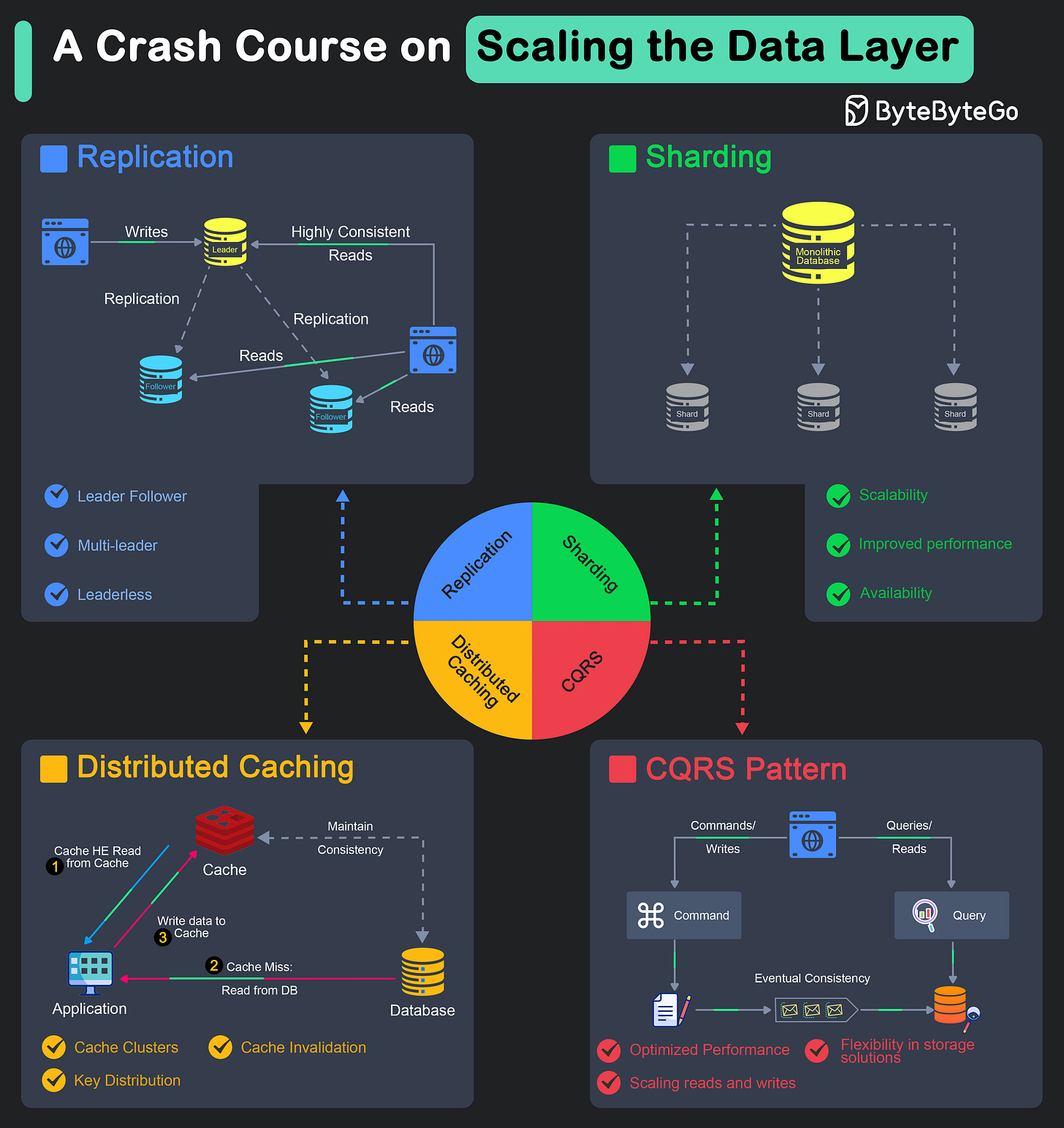A Crash Course on Scaling the Data Layer
The scalability of a system is heavily dependent on the data layer.
No matter how much effort is made to scale the API or the application layer, it is limited by the scalability of the data layer. Also, scaling the data layer is often the most difficult task during application design.
Horizontally scaling the data layer of an application, also known as “scaling out”, involves distributing the data and load across multiple servers or nodes.
This approach is particularly effective for handling large volumes of data and high traffic loads, but it also adds multiple orders of complexity. Since the data is distributed, many issues regarding transactions and consistency that don’t appear in monolithic databases become quite common.
Several techniques are available for horizontally scaling the data layer, each having pros and cons with specific nuances worth considering.
In this post, we’ll explore the major techniques for scaling the data layer horizontally along with examples. Also, we will understand the advantages and disadvantages of each technique to get a better idea of when to use a particular approach over another choice.



